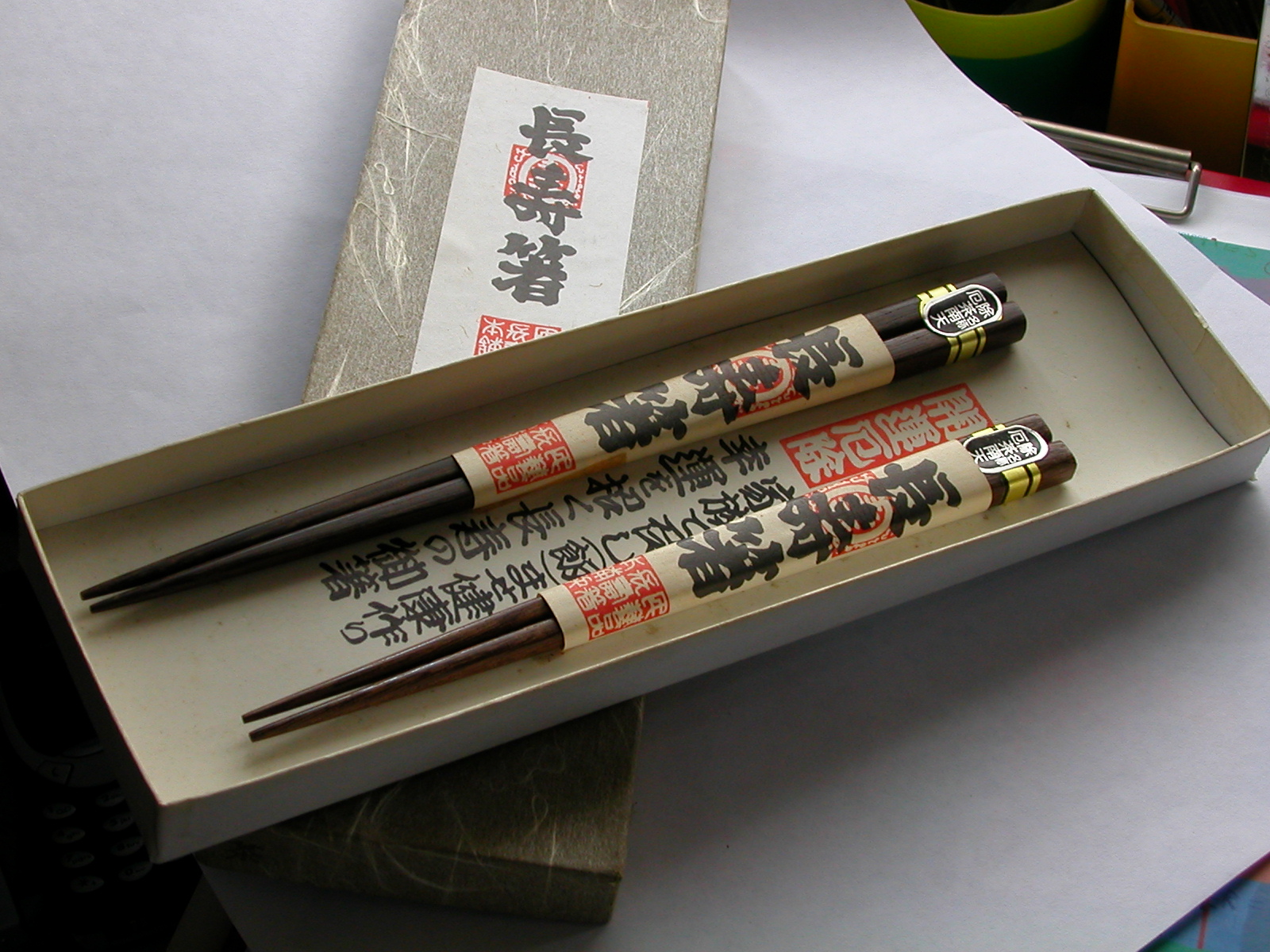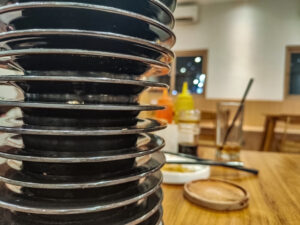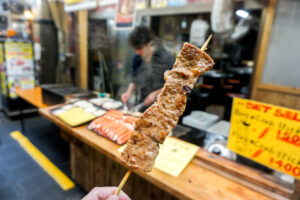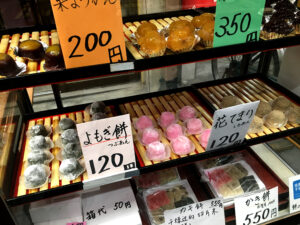Japan is a country rich in culture, history, and craftsmanship, making it a haven for travelers seeking unique souvenirs. From traditional crafts to modern snacks, the variety of items available to bring home is as diverse as the country’s landscapes. This article will guide you through the top souvenirs to consider during your visit to Japan, ensuring you have a tangible piece of this enchanting destination to remember long after your journey has ended.
1. Discovering Japan: The Allure of Unique Souvenirs
Souvenirs serve as more than just mementos from a trip; they encapsulate the experiences and emotions felt during one’s travels. Japan, with its blend of ancient traditions and cutting-edge innovation, offers a plethora of unique souvenirs that speak to its culture. From intricately crafted items to delicious snacks, the range of souvenirs available can captivate any traveler’s imagination.
When selecting a souvenir, consider what resonates with you personally. Whether it’s the artistry of a handcrafted item or the taste of a local delicacy, the best souvenirs are those that tell a story and evoke memories of your time in Japan. This journey of discovering the perfect keepsake can be an adventure in itself, leading you to explore local markets, artisan shops, and food stalls.
The process of finding a souvenir in Japan is an experience that allows you to engage with local culture. Many items reflect Japan’s artistic heritage and craftsmanship, giving you insight into centuries-old traditions. Additionally, shopping for souvenirs often leads to interactions with local artisans and vendors, enhancing your understanding of Japanese culture.
In the following sections, we will delve deeper into some of the most iconic souvenirs you can find across the country. From traditional crafts that showcase Japan’s rich heritage to delicious snacks that delight the taste buds, the options are plentiful. Each item offers a glimpse into the heart and soul of Japan, making your souvenir hunt a meaningful part of your trip.
As you prepare to embark on your souvenir shopping journey, keep an open mind and a curious heart. The best souvenirs often come with unexpected stories and experiences that will enrich your travels. Let’s explore the traditional crafts and cultural emblems that define Japanese souvenirs.
2. Traditional Crafts: A Glimpse into Japanese Heritage
Japanese traditional crafts are a testament to the country’s rich cultural heritage, showcasing skills that have been passed down through generations. Each region of Japan boasts its unique crafts, influenced by local resources and historical contexts. Whether it’s the elegance of Kyoto’s Kyo-yaki ceramics or the intricate designs of Okinawa’s Bingata textiles, these crafts tell a story of place and tradition.
One of the most renowned traditional crafts is pottery. Japanese ceramics, such as Imari and Kutani, are celebrated for their beauty and craftsmanship. Each piece is often hand-painted with intricate designs, making them not only functional but also collectible art. Purchasing a piece of pottery not only supports local artisans but also brings a bit of Japan’s artistic legacy into your home.
Another popular craft is lacquerware, or urushi, which involves a meticulous process of applying layers of natural sap to create stunning, glossy finishes. Items like bowls, trays, and even jewelry crafted in this traditional manner are both practical and beautiful. Investing in a piece of lacquerware allows you to own a unique item that embodies centuries of Japanese craftsmanship.
Textiles also play a significant role in Japan’s traditional crafts. From the delicate silk kimonos of Kyoto to the rugged indigo-dyed fabrics of Tsujido, each textile carries a story of its region. Purchasing a handwoven piece not only allows you to take home a beautiful item but also connects you to the artisanal practices that define Japanese culture.
Shopping for these traditional crafts can be a delightful experience. Many artisans welcome visitors into their workshops, offering a rare glimpse into the creative process. This interaction enhances your appreciation for the item and its cultural significance. Consider supporting local artisans by purchasing these handcrafted items, ensuring that these time-honored traditions continue for future generations.
3. Iconic Kokeshi Dolls: The Perfect Cultural Keepsake
One of the most charming and recognizable souvenirs from Japan is the Kokeshi doll. Originally crafted in the Tohoku region of Japan, these wooden dolls have become an iconic symbol of Japanese folk art. With their simple, elegant design—characterized by a round head and cylindrical body—Kokeshi dolls embody the charm of traditional Japanese craftsmanship.
Kokeshi dolls are traditionally made from wood and are hand-painted with vibrant colors and intricate patterns. Each doll is unique, often reflecting the style and personality of the artisan who created it. Collecting these dolls offers a delightful insight into the artistry and cultural significance of this traditional craft.
In addition to their aesthetic appeal, Kokeshi dolls carry rich symbolic meanings. They were originally made as toys for children but have since evolved into items of art and decoration. Many believe that Kokeshi dolls bring good fortune and happiness, making them a thoughtful gift or personal keepsake.
When purchasing a Kokeshi doll, consider visiting local workshops where artisans create these beautiful pieces. Many craftsmen are eager to share their stories and techniques, giving you a deeper appreciation for the art form. This personal connection enhances the value of the doll, transforming it into a meaningful souvenir.
Kokeshi dolls also come in various styles and colors, representing different regions of Japan. This diversity allows collectors to curate their own unique collection, each telling a different story. Whether you choose a classic design or a contemporary twist, a Kokeshi doll is a delightful reminder of your journey through Japan.
4. Woven Wonders: Exploring Japan’s Beautiful Textiles
Japan is home to an impressive array of textiles, each with its unique history, technique, and cultural significance. From the luxurious silk of Kyoto to the rustic charm of indigo-dyed fabrics, the world of Japanese textiles is rich and varied. Bringing home a piece of this heritage can serve as a tangible reminder of your travels.
One of the most notable textile traditions is the production of kimono. These garments are not only stunning but also embody centuries of Japanese culture and artistry. While original kimonos can be quite expensive, there are many places where you can find vintage kimonos or fabric remnants at more affordable prices. Each piece tells a story, making it a meaningful addition to your collection.
Another interesting textile to consider is tenugui, a traditional Japanese hand towel made from cotton. These versatile cloths come in a myriad of designs and colors, often featuring beautiful motifs that reflect Japanese culture. Tenugui can be used as a decorative piece, a wrapping cloth, or even a functional towel, making them a practical souvenir.
If you are interested in the art of weaving, consider purchasing a piece from Nishijin-ori, a type of textile produced in Kyoto known for its intricate patterns and luxurious quality. Items such as scarves, bags, and even interior decor made from Nishijin-ori are perfect for those who appreciate the finer things in life.
Indigo-dyed fabrics from the Tokushima region offer another unique option. These textiles are characterized by their deep blue color and natural dyeing techniques. Purchasing a piece of indigo fabric supports sustainable practices and allows you to take home a piece of Japan’s rich textile heritage.
When shopping for textiles in Japan, look for local markets and specialty shops that focus on traditional craftsmanship. Engaging with the artisans and learning about their techniques can enhance your experience and provide a greater appreciation for the artistry involved in each piece.
5. Deliciously Different: Japanese Snacks as Souvenirs
Japan is renowned for its diverse and delicious culinary landscape, making food-related souvenirs a popular choice among travelers. Bringing home snacks can offer a taste of Japan that lingers long after your trip. From sweet treats to savory delights, the choices are plentiful and can cater to any palate.
One of the most iconic snacks to bring home is the famous matcha-flavored sweets. Matcha, a finely ground powder of specially grown green tea leaves, has become a symbol of Japanese cuisine. You can find everything from matcha chocolates to matcha-flavored cookies and cakes, all of which allow you to savor the unique flavor of this traditional ingredient.
Another must-try snack is mochi, a chewy rice cake that comes in various flavors and fillings. These delightful treats often feature seasonal ingredients, making each type a unique experience. Gift boxes containing assorted mochi are widely available and make for a thoughtful souvenir that can be shared with loved ones.
For those who enjoy savory snacks, consider bringing home some Japanese rice crackers, known as senbei. These crispy treats come in various flavors, from soy sauce to seaweed, offering a crunchy reminder of your time in Japan. They are widely available in specialty stores and make for great gifts as well.
Don’t forget about unique regional specialties! Each area of Japan has its own local snacks that can make for exciting souvenirs. For instance, Hiroshima is known for its “momiji manju,” a maple leaf-shaped cake filled with sweet bean paste. Exploring local markets can reveal delightful snack options that capture the essence of the region you visited.
When selecting food souvenirs, be mindful of packaging and expiration dates, especially for perishable items. Many snacks come beautifully packaged, making them ideal for gifting as well. Regardless of your choice, a snack souvenir from Japan will undoubtedly bring back fond memories of your culinary adventures.
6. Tempting Treats: The Appeal of Matcha-Flavored Goods
Matcha has transcended its traditional role in tea ceremonies to become a popular flavor in a variety of culinary delights. The rich umami flavor and vibrant green color of matcha make it a favorite among both locals and visitors. Bringing home matcha-flavored goods allows you to share a little piece of Japan’s tea culture with friends and family.
The range of matcha products available in Japan is extensive. From matcha KitKats to matcha-flavored ice cream, there is something to satisfy every sweet tooth. For those who enjoy baking, consider purchasing matcha powder to make your own treats at home. The experience of preparing and sharing matcha-infused dishes can serve as a lovely reminder of your journey.
Many Japanese confectionery brands have embraced matcha, creating unique sweets that highlight its flavor. For example, matcha daifuku (mochi filled with sweet red bean paste) is a delectably chewy treat that combines traditional ingredients with the contemporary favorite of matcha. Gift boxes of these treats make for thoughtful souvenirs and are often beautifully packaged.
In addition to sweets, matcha is also making waves in savory dishes. You can find matcha-flavored noodles, sauces, and even seasonings that offer a unique twist to familiar recipes. These items are perfect for adventurous cooks looking to incorporate the essence of Japan into their culinary repertoire.
When purchasing matcha goods, consider visiting specialty shops that focus on high-quality matcha products. These stores often provide samples, allowing you to experience the different flavors before making your selection. This personal touch enhances your shopping experience and ensures you are bringing home the best of Japan’s matcha offerings.
With matcha’s growing popularity worldwide, these souvenirs not only serve as a delightful treat but also act as conversation starters. Sharing the unique flavors and stories behind matcha products can transport your friends and family to Japan with each bite.
7. Ceramics and Pottery: Timeless Treasures to Take Home
Japanese ceramics and pottery are not only beautiful but also carry deep historical significance. Known for their craftsmanship and aesthetic appeal, these items are a must-have for anyone looking to bring back a piece of Japan’s artistic heritage. From functional dishware to decorative pieces, the options available are as diverse as the regions they come from.
One of the most famous pottery styles is Bizen-yaki, originating from Okayama Prefecture. This type of pottery is known for its unglazed, earthy appearance and natural clay textures. Bizen ware is often characterized by its simple yet elegant forms that make it a perfect addition to any home. Purchasing a piece of Bizen-yaki not only supports local artisans but also allows you to own a timeless treasure.
Another celebrated style is Arita porcelain, known for its delicate craftsmanship and intricate designs. Arita has a long history dating back to the 17th century and is often characterized by intricate blue and white patterns. Collecting Arita porcelain offers a glimpse into the rich history of Japanese ceramics and its evolution over time.
In addition to traditional styles, contemporary ceramic artists are also making waves in the scene. Many artisans blend traditional techniques with modern design aesthetics, resulting in unique pieces that stand out. Visiting galleries and studios allows you to discover these innovative works and perhaps find a piece that resonates with your personal style.
When selecting ceramics, consider the practicality of the items. Many pieces are functional and can be used in daily life, making them not just beautiful items but also useful additions to your home. Look for items that are both visually pleasing and functional, such as bowls, cups, and plates.
Shopping for ceramics in Japan often provides opportunities to visit artisan workshops, where you can see the making process firsthand. Engaging with the artisans and learning about their techniques adds a layer of appreciation for your chosen piece. Ceramics from Japan are not just souvenirs; they are stories of craftsmanship that you can cherish for years to come.
8. Maneki Neko: The Lucky Cat and Its Symbolism
The Maneki Neko, or "beckoning cat," is one of the most recognized symbols of Japanese culture and a popular souvenir among travelers. Often seen in shops, restaurants, and homes, this charming figurine is believed to bring good luck and fortune to its owner. Bringing a Maneki Neko home serves as a delightful reminder of the warmth and hospitality of Japan.
Maneki Neko comes in various forms, colors, and sizes, each with its unique meaning. The most common version features a cat with one paw raised, symbolizing an inviting gesture. Different colors of Maneki Neko symbolize different types of luck: white represents purity, black wards off evil spirits, and gold attracts wealth. Whether you choose a traditional figure or a modern interpretation, each version carries its charm.
In addition to its aesthetic appeal, the Maneki Neko is steeped in folklore. One popular legend tells of a poor temple priest and his cat, who raised its paw to beckon a traveler. Grateful for the cat’s gesture, the traveler later donated money to the temple, saving it from financial ruin. This story enhances the figurine’s meaning as a symbol of protection and fortune.
When searching for a Maneki Neko, consider visiting local craft shops, where you can find handmade versions that reflect the artisan’s style. Engaging with the local culture enhances your experience and allows you to bring home a piece that is unique to your travels.
Many travelers choose to place their Maneki Neko in their homes or offices to invite good fortune into their lives. Whether you believe in its symbolism or simply appreciate its charming appearance, a Maneki Neko serves as a meaningful souvenir that can bring a smile to your face.
In conclusion, the Maneki Neko is more than just a figurine; it is a cultural icon that represents Japan’s hospitality and good fortune. By taking one home, you carry a piece of Japan’s rich folklore and tradition into your everyday life.
9. Sake and Shochu: Bringing Home Japan’s Finest Spirits
For those who enjoy a good drink, bringing home a bottle of sake or shochu can be an excellent way to remember your time in Japan. These traditional Japanese spirits offer unique flavors and cultural significance, making them popular choices for souvenirs. Whether you’re a seasoned connoisseur or a curious newcomer, exploring the world of Japanese spirits is an exciting journey.
Sake, a rice wine with a long history in Japan, is produced through a meticulous brewing process. It comes in various types, from sweet to dry, and can be enjoyed warm or chilled. When selecting a bottle to take home, consider visiting local sake breweries where you can learn about the brewing process and sample different varieties. This firsthand experience enhances your appreciation for the drink and helps you choose a bottle that suits your taste.
Shochu, on the other hand, is a distilled spirit that can be made from various ingredients, including barley, sweet potatoes, and rice. It has a higher alcohol content than sake and offers a wide range of flavors and aromas. Like sake, shochu is versatile and can be enjoyed straight, on the rocks, or mixed into cocktails. Exploring the different types of shochu can open up a whole new world of flavors for you to discover.
When purchasing sake or shochu, consider the packaging as well. Many bottles are beautifully designed, making them not only a drink but also a lovely decorative item. Additionally, some producers offer gift sets that include cups or other accessories, making it a thoughtful gift for friends or family.
It’s important to note that when bringing alcohol back home, you should be aware of your country’s regulations regarding the importation of spirits. Most countries have limits on the quantity you can bring, so it’s best to check the guidelines beforehand to avoid any issues.
In conclusion, bringing home sake or shochu allows you to share a taste of Japan with loved ones while also enjoying a piece of the country’s rich drinking culture. Whether sipped alone or shared during a gathering, these spirits will undoubtedly evoke fond memories of your travels.
10. Japanese Stationery: A Blend of Function and Style
Japanese stationery is celebrated for its quality, design, and functionality, making it a popular souvenir choice for travelers. With an emphasis on aesthetics and practicality, Japanese stationery products range from beautifully designed notebooks to intricate writing instruments, offering a little something for everyone.
One of the most sought-after items is washi tape, a decorative adhesive tape made from traditional Japanese paper. Washi tape comes in a myriad of colors and patterns, allowing for creative expression in scrapbooking, gift wrapping, and home décor. Its versatility and charm make it a perfect souvenir for those who appreciate art and creativity.
Another must-have is the Japanese notebook, often characterized by high-quality paper and thoughtful layouts. Brands like Midori and Hobonichi are renowned for their craftsmanship and design, making their products highly coveted among stationery enthusiasts. These notebooks not only serve practical purposes but also inspire creativity and provide a tactile experience that digital alternatives cannot replicate.
Writing instruments also hold a special place in Japanese stationery culture. From smooth-writing gel pens to meticulously crafted fountain pens, the quality and design of these tools are often unparalleled. Many brands, such as Pilot and Uni-ball, offer a wide range of products that make writing an enjoyable experience. Bringing back a set of quality pens can elevate your everyday tasks and remind you of your travels every time you write.
Visiting local stationery shops in Japan is a delightful experience, as many stores curate unique collections that reflect the latest trends in design and functionality. Engaging with shopkeepers who are passionate about their products can enhance your experience and help you find items that resonate with your personal style.
In conclusion, Japanese stationery offers a perfect blend of functionality and artistry, making it an ideal souvenir choice. Whether you opt for decorative tapes, beautifully crafted notebooks, or exquisite writing instruments, each item will serve as a reminder of your time in Japan and inspire creativity in your everyday life.
11. Unique Fashion: Vintage Kimono and Yukata Finds
For those seeking a unique fashion souvenir from Japan, vintage kimonos and yukatas are excellent choices. These traditional garments embody the beauty and elegance of Japanese culture, making them not only stylish items to wear but also pieces of history to cherish. Bringing home a kimono or yukata allows you to carry a piece of Japanese heritage with you.
Kimonos are often made from luxurious silk and are characterized by their intricate patterns and vibrant colors. While traditional kimonos can be quite expensive, vintage or second-hand options are often available at a fraction of the price. Many shops specialize in vintage kimonos, offering a range of styles and sizes to suit various tastes. This not only makes for a unique fashion statement








